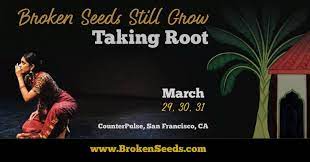Get a Custom Essay Paper that meets your expectations by clicking ORDER
Analytic Therapy
- How might the counselor have to adjust his or her own values to work with clients from differing cultures? How is therapist self-care an ethical matter as well as a way to prevent therapist burnout?
- How is resistance a central issue in analytic therapy? Explain the functions that resistance serves. Discuss some guidelines that you might use in understanding both the resistance of your clients and your reactions to their resistance.
- How is resistance a central issue in analytic therapy? Explain the functions that resistance serves. Discuss some guidelines that you might use in understanding both the resistance of your clients and your reactions to their resistance.
- How is resistance a central issue in analytic therapy? Explain the functions that resistance serves. Discuss some guidelines that you might use in understanding both the resistance of your clients and your reactions to their resistance.
- How is resistance a central issue in analytic therapy? Explain the functions that resistance serves. Discuss some guidelines that you might use in understanding both the resistance of your clients and your reactions to their resistance.
- How is resistance a central issue in analytic therapy? Explain the functions that resistance serves. Discuss some guidelines that you might use in understanding both the resistance of your clients and your reactions to their resistance.
- How is resistance a central issue in analytic therapy? Explain the functions that resistance serves. Discuss some guidelines that you might use in understanding both the resistance of your clients and your reactions to their resistance.
- How is resistance a central issue in analytic therapy? Explain the functions that resistance serves. Discuss some guidelines that you might use in understanding both the resistance of your clients and your reactions to their resistance.
- How is resistance a central issue in analytic therapy? Explain the functions that resistance serves. Discuss some guidelines that you might use in understanding both the resistance of your clients and your reactions to their resistance.
- How is resistance a central issue in analytic therapy? Explain the functions that resistance serves. Discuss some guidelines that you might use in understanding both the resistance of your clients and your reactions to their resistance.
- How is resistance a central issue in analytic therapy? Explain the functions that resistance serves. Discuss some guidelines that you might use in understanding both the resistance of your clients and your reactions to their resistance.
- What are some of the main contributions that you see in working with clients from a family systems perspective? Mention some of the limitations you see in the family systems perspective, including working with families from culturally diverse backgrounds?
References
Corey, G. (2013). Theory and Practice of Counseling and Psychotherapy (Ninth ed.). Belmont, CA: Brooks/Cole.
Below is a partial answer to the above homework questions by one of our writers. If you are interested in a custom non plagiarized top quality answer, click order now to place your order.
Effective therapist
In dealing with clients from a different cultural background, the personal beliefs of a therapist are put on the line as well as their ability to effectively render services. As such therapists need to be sensitive to their client’s cultural beliefs and strive hard to offer services that are congruent to them. Therapists additionally need to ensure that they are fine both in body and mind to be able to render adequate services and hence the importance of self care (Skovholt and Trotter-Mathison, 2014). The professional imperative of psychological wellness is one that is vital for the provision of services during therapy sessions.
Resistance in therapy
The lack of openness and rejection of the process of therapy in clients is sums up the concept of resistance in psychology. The patient does not make any progress in getting better neither does he attempt in making any relation to the therapeutic solutions put forth. This can be witnessed in the objections by the patient to open up about certain issues. In an effort to understand the patient, the therapist should endeavor to comprehend the inhibitions of the client.
This therefore calls for the in-depth analysis of the client and his reservations to foster the therapist’s understanding and the methods that will work for the patient. Constant communication between the two is a condition for the resistance to be dealt with effectively. It is in the understanding of the resistance that the therapist can be able to offer reliable services as the issues to be resolved often manifest in form of resistance (Voutilainen and Perakyla, 2016).
The therapist needs to practice patience and understanding towards the patient so that the patient can open up in confidence when the time comes. It is only in the understanding of the client’s fear of addressing some issues that the client can fully be helped and hence the importance of analytic therapy and resistance.
Major theorists on human nature.
Freud in his analysis of human nature concluded that actions and reactions are based on the attainment of utmost pleasure while at the same time avoiding pain. His view is premised on the power of instinct in the determination of one’s character. Adler on the other hand is a proponent of personal choice as being the major determinant in people’s lives (Corey, 2013).
Both theorists were however on the same page when it came to the decision on the formation of one’s personality being the first few years in one’s childhood. However, Adler was of the view that although childhood experiences played a role in shaping one’s personality, the concept of the future in terms of making goals and choices that propels one towards personal goals is the real determinant of the individual’s character.
Therapeutic process.
To break the ice between the client and the therapist during the first session, the therapist is required to make the client feel most welcomed. The client is then given the opportunity to state why he sought therapy and his expectations as well as give a brief description of his life. The therapist would then make it known that the sessions would be non-judgmental and encourage the client to be as honest as possible to be able to attain his expectations.
He would also assure the client of the confidentiality of the sessions and what is expected of them (Corey, 2013). The goals of the sessions may keep on changing and hence it it vital for the therapist to keep asking for the progress of the client, as per their own assessment and the goals they intend to achieve at the end of the treatment. The relationship between the client and the therapist needs to be confidential and full of trust for there to be progress.
Accurate empathy.
In an effort to understand the client in order to provide the most effective service, therapists often have to identify with the client’s living conditions. In so doing, they are able to place themselves in their shoes and hence give suggestions that are most likely to elevate the client’s situation. In the accurate dissemination of the client’s issue and the subsequent provision of relatable solutions, confidence levels increase and hence the improvement of the services rendered. There are however several challenges that are a hindrance to empathy in the field of psychology, cultural differences.
The diversity that characterizes the human race means that the beliefs and practices vary from one community to another. In certain cases, these differences act as a barrier to the provision of effective therapeutic solutions. This is due to the beliefs and the practices that might be acceptable in other cultures but forbidden in others. The second one is personal biases, although this does not affect most therapists, some personal and religious biases have been cited as hindrance in the provision of therapeutic services (Croft, Schmader and Block, 2015).
The ‘here and now’ therapeutic concept.
The understanding of the present is an important aspect of dealing with the issues that are faced. The cornerstone of the Gestalt therapeutic process is the understanding of one’s present environment and situation to expand the client’s view of life and thereby enhance growth (Corey, 2013). It enhances the basic understanding of the client’s personality as at present and enhances their growth in their rediscovery process.
This therapeutic process does recognize the role that the past has to play in the present situation of the client and endeavors to bring focus to the past into their present situation in order to conclusively deal with it. This is mostly done by the reenactment of the past events during the sessions. This form of therapy avoids mentions of the future as it is yet to happen and hence their primary focus is on the present…..
Get a Custom Essay Paper that meets your expectations by clicking ORDER









